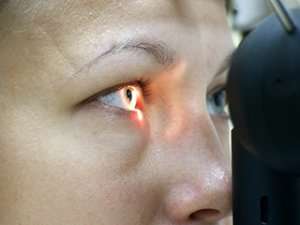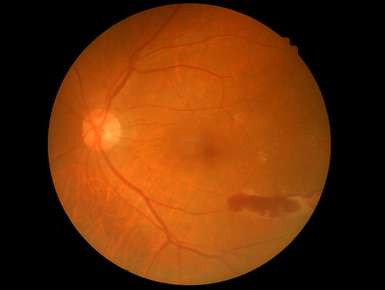Blog

Peripheral Vision Loss
Normal sight includes central vision (the field of view straight ahead) and peripheral vision (the field of view outside the circle of central vision). The inability to see within a normal range of view often indicates peripheral vision loss. In severe cases of...

How To Protect Your Eyes While Wearing Halloween-Themed Contact Lenses
Are Halloween-Themed Contact Lenses Safe? Colorful contact lenses definitely add a little extra flair to your costume if you're planning to be a zombie, vampire or other fictional creature for Halloween. Unfortunately, wearing over-the-counter lenses for just one...

Presbyopia
As we age, our eyes—like the rest of our bodies—begin to lose flexibility and strength. When this happens to the lens of the eye and its surrounding muscles, your lens will become stiff. This makes it harder to see close objects clearly because the eyes can't focus...

Fuchs’ Corneal Dystrophy
Fuchs' dystrophy (pronounced fooks DIS-truh-fee) is an eye disease characterized by degenerative changes to the cornea’s innermost layer of cells. The cause for Fuchs' dystrophy is not fully understood. If your mother or father has the disease, then there is roughly a...

Patches
Eye patches are used to strengthen muscle control in weak eyes. By placing a patch over the strong eye, the weaker eye is forced to do the heavy lifting. While it may be uncomfortable for the patient at first, the muscle controlling the weaker eye will become tougher...

Age-Related Macular Degeneration
One of the leading causes of vision loss in people who are age 50 or older is age-related macular degeneration (AMD). This common eye condition leads to damage of a small spot near the center of the retina called the macula. The macula provides us with the ability to...

How to Transition Into Different Lighted Situations
Do Your Eyes Have Trouble Adjusting to the Dark or Light? These Tips Will Help Stepping into the bright sunshine or entering a dimly lit room can temporarily affect your vision, whether you have 20/20 vision or wear corrective lenses. Fortunately, following a few...

Diabetic Eye Diseases
Diabetes is a condition that involves high blood sugar (glucose) levels. This can affect many parts of the body, including the eyes. One of the most common diabetic eye diseases is diabetic retinopathy, which is also a leading cause of blindness in American adults....

Presbyopia
Somewhere around the age of 40, most people’s eyes lose the ability to focus on close-up objects. This condition is called presbyopia. You may start holding reading material farther away, because it is blurry up close. Reading suddenly gives you eyestrain. You might...

Macular Hole
The condition known as a macular hole refers to a tiny break in the macula that results in blurry or distorted vision. To fully understand the condition, one must understand eye anatomy. The macula is a spot located in the center of the retina (the back portion of the...



